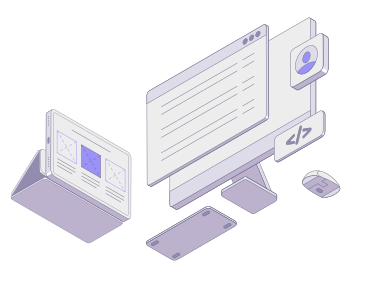




Achieving Lightning-Fast Website Load Times: A 12-Step Checklist
In today’s fast-paced digital landscape, website speed is crucial for success. Studies show that even a one-second delay in page load time can result in a 7% reduction in conversions. For businesses that rely on their online presence, optimizing website speed is not just important—it’s essential. To help you achieve lightning-fast load times, we’ve compiled a comprehensive 12-step checklist that covers all the essential strategies for enhancing website performance.
1. Choose the Right Hosting Provider
Your website’s speed is heavily influenced by the quality of your hosting provider. If your current server isn’t meeting performance expectations, consider upgrading to a fully managed WordPress hosting environment. Premium hosting solutions typically offer better server resources, faster response times, and enhanced security, all of which contribute to improved website speed and reliability.
2. Enable Gzip Compression
Gzip compression reduces the size of your website’s files by compressing HTML, CSS, and JavaScript files. This significantly decreases loading times by allowing assets to be delivered more quickly to your visitors. Enabling Gzip on your server is a straightforward yet highly effective way to optimize website performance.
3. Minify and Combine JavaScript/CSS Files
Minifying and combining your JavaScript and CSS files reduces the amount of code that needs to be loaded by the browser. This not only improves load times but also ensures that visual elements are displayed more quickly for your visitors. By removing unnecessary characters, spaces, and comments from these files, you streamline the code and enhance site performance.
4. Leverage Browser Caching
Browser caching allows your website to store static resources, such as images, CSS, and JavaScript, on a visitor’s browser. This means that returning visitors will experience faster load times, as their browser doesn’t need to reload the entire site each time they visit. Setting appropriate cache expiration times ensures that your content is both fast-loading and up-to-date.
5. Optimize Images with Lossless Compression
Images often account for the largest files on a website, making image optimization crucial for speed. Use lossless compression techniques to reduce image file sizes without sacrificing quality. Tools like TinyPNG and ImageOptim can help you compress images, ensuring your site loads quickly while maintaining visual appeal.
6. Reduce Server Response Time
A fast server response time is critical for achieving quick load times, especially for first-time visitors. Optimize your server’s performance by using reliable hosting, minimizing the use of resource-heavy plugins, and optimizing your database. A reduced response time ensures that your website starts loading almost immediately, improving the overall user experience.
7. Implement a Content Delivery Network (CDN)
A Content Delivery Network (CDN) stores copies of your website’s content on servers distributed around the world. When a user accesses your site, the CDN serves the content from the server closest to their location, reducing latency and improving load times. This global distribution of content ensures a faster, more consistent experience for all visitors, regardless of their geographic location.
8. Enable Lazy Loading for Images and iframes
Lazy loading defers the loading of images and iframes until they are needed, such as when they enter the viewport. This reduces the initial load time of your page and saves bandwidth, making your site faster and more efficient. Lazy loading is especially effective on pages with a lot of images or embedded media.
9. Remove Render-Blocking Resources
Render-blocking resources, such as JavaScript and CSS files that delay the rendering of your page, can significantly slow down your site. To optimize load times, move these files to locations where they won’t block the loading of visual elements, such as the footer. Alternatively, use asynchronous loading to allow the browser to render the page while loading these resources in the background.
10. Optimize for Mobile Experience
With mobile traffic continuing to rise, ensuring your website is optimized for mobile devices is crucial. A responsive design that adapts to different screen sizes, along with properly sized fonts and touch-friendly navigation, enhances the mobile user experience. Optimizing your site for mobile also reduces load times on mobile devices, which is critical for retaining users and improving mobile SEO rankings.
11. Remove Query Strings from Static Resources
Query strings in URLs can prevent certain proxy caching servers and CDNs from caching your content, leading to missed opportunities for speed improvements. Removing these query strings ensures that your resources are properly cached, improving load times for your visitors. Many content management systems (CMS) and plugins offer options to remove query strings automatically.
12. Inline Critical CSS
Inlining the most important CSS ensures that the critical parts of your page load immediately. By embedding essential CSS directly into the HTML, you can render the main content quickly, improving the perceived load time for your visitors. Delaying the loading of non-essential CSS until after the main content has rendered can further enhance the user experience.
Conclusion
Optimizing your website’s speed is an ongoing process, but by following this 12-step checklist, you can achieve significant improvements in load times, user experience, and search engine rankings. At Masthead Technology, we take website performance seriously. We’re here to help you implement these strategies and ensure your website excels on all speed tests, including Google PageSpeed Insights, GTmetrix, and Pingdom. Let’s work together to make your website faster, more efficient, and ultimately, more successful.
FAQs
Why is website speed so important? Website speed is crucial because it directly affects user experience, search engine rankings, and conversion rates. Faster websites provide a better user experience, rank higher in search results, and are more likely to convert visitors into customers.
What tools can I use to measure my website’s speed? You can use tools like Google PageSpeed Insights, GTmetrix, and Pingdom to measure your website’s speed. These tools provide detailed reports and recommendations for improving performance.
How does a CDN improve website speed? A CDN improves website speed by storing copies of your content on servers worldwide and delivering it from the server closest to the user, reducing latency and load times.
What is Gzip compression, and how does it help? Gzip compression reduces the size of your website’s files, which decreases loading times by allowing assets to be delivered more quickly to visitors. It is a simple yet effective way to optimize your website’s performance.
How can Masthead Technology help optimize my website’s speed? We specialize in website performance optimization and can help implement strategies like those outlined in this checklist to ensure your site runs fast and efficiently. Contact us today to learn more about how we can boost your website’s performance.

